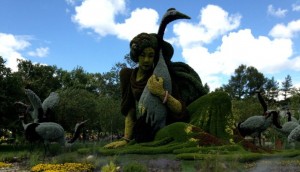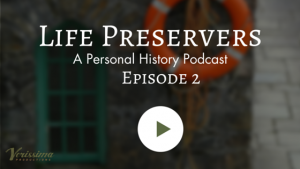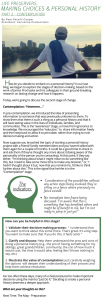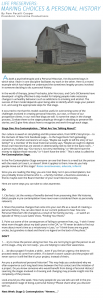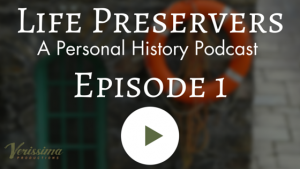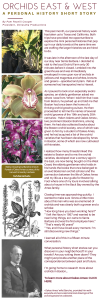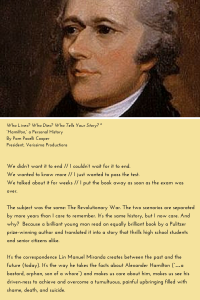How many of these names do you recognize as famous entertainers? These are their given names and many of them appear on the Memorial plaques at The Actor’s Temple. If you don’t know, Google them to find out: Benjamin Kubelsky Aaron Chwatt Sonya Kalish Edward Israel Iskowitz Shirley Schrift Mendel Berlinger Mechel Saltpeter For more[Read More]
personal history
How We Tell Our Stories
By Pam Pacelli Cooper President, Verissima Productions We tell stories with video and audio. In the personal histories we create we hope to capture the successes and happy moments, but also the moments of pain, mistakes, and repair. If future generations see only the “great” moments of their grandparents’ lives, they may be cowed and dispirited, rather[Read More]
Life Preservers Podcast – Episode 2: An interview with Leah Abrahams
What do Georges Briard, Gertrude Stein, and a Lutheran fraternal organization have in common? Find out when you listen to our interview with Leah Broyde Abrahams, personal historian. As a subject in our series on getting to know personal historians, Leah describes the path she took to become one, what she has learned, and some insights on why creating[Read More]
Personal History & Making Choices – Part 2
Making Choices & Personal History
Life Preservers Podcast: Episode 1 – An Interview with Marcia Orland
Welcome to the first episode of our new podcast! Each episode of Life Preservers: A Personal History Podcast will feature interviews designed to help you think about personal history–what it is, how to do it, why to do it, and how personal histories create a correspondence with the future. In addition to the interviews, we’ll point[Read More]
Stumbling into Paradise: The Sacred Space
**Interested in reading Blue Highways? CLICK HERE to get a copy.
Creating a Correspondence with the Future: A Monthly Newsletter
We’re excited to announce the launch of a monthly e-newsletter, beginning in April. We’d love to have you join us and subscribe. Just CLICK HERE to be put on our mailing list! Want to know more? Watch this quick iPhone video we shot on location for an introduction to what will be contained in each[Read More]
Orchids East and West: A Personal History Short Story
“Hamilton” the Musical makes History be Here and Now!
Who Lives? Who Dies? Who Tells Your Story?* “Hamilton,” a Personal History By Pam Pacelli Cooper President, Verissima Productions Click to listen to “Non-Stop” from Hamilton Click to listen to “Who Tells Your Story” from Hamilton

